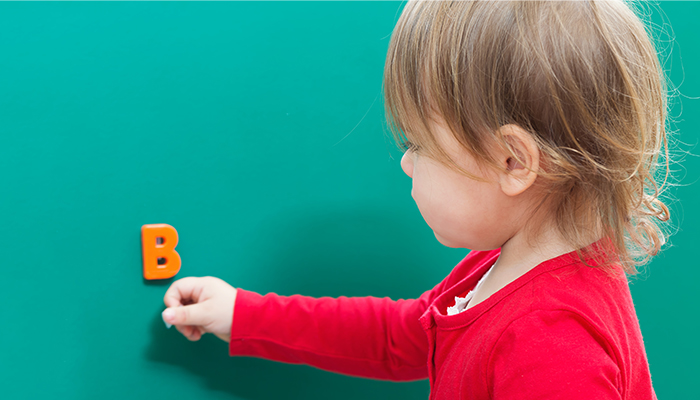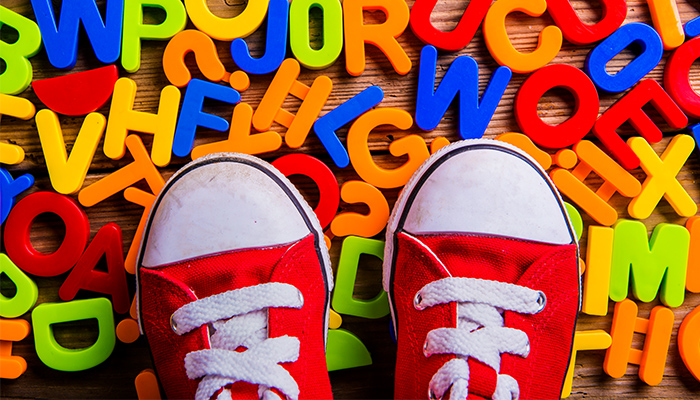ABCs and Foreign Language Badge Combination

By Holly Beverage
Combining ABCs and Foreign Language
We all know our ABCs; they are one of the first things we learn in school. Once we learn to read and write, our lives change forever. Our ability to communicate what we think and feel is key as we grow up and evolve in life. The 26 letters that we begin to recognize turn into the symbols that we record during classwork, in our art projects, and at home. Did you know that knowing the alphabet is currently the most telltale sign of a child’s future literacy? One of the ways you can focus on this topic with your children or group is to work on the ABC badge alongside the Foreign Language badge.

Easy as 1-2-3?
If you are looking for ways to present and teach the ABCs badge, think about what learning these simple characters mean. How do we go about learning language? Which part of our brain is working as we learn new letters and words? What are the most effective ways to boost language learning? Once we learn to read, speak and write the process becomes automatic. It stops being a task and it becomes so easy; frequently we forget what it took for us to grasp it all. Try learning alongside your members this week. In her article, “How the Brain Changes When We Learn to Read” Nicola Bell analyzes the slow and effortful process of recognizing letters and words and the parts of our brain that put in the work as we read. Her insight debunks any thought that you may have ever had- that learning to read and recognize words is easy to do.

Apply It – Kindergarten Prep.
Now that you have a baseline of knowledge on language learning, apply it to your lessons! It has been proven that children learn best in immersive environments. Interaction is the key here! This means that learning can be accelerated virtually anywhere when parents and teachers are intentional around children. One of the best kindergarten prep goals is to introduce your children to the alphabet. By the end of kindergarten, can usually read, write, and recognize all 26 letters (both uppercase and lowercase). By the start of first grade, a child usually reading at a basic level and identifying common sight words. Keep in mind though that every child is different. Some will speed ahead while others may need to take more time. Try some of the following:
- Get them interested – spruce up your alphabet flashcards with fun vintage ones!: After your child recognizes the letters, bring out some pipe cleaners and help them make the words themselves!
- Make it fun – sing the alphabet song alongside them! This super simple ABC song is perfect for 2-4 year olds.
- Point it out – make your child’s learning relevant by pointing out objects and letters when you are out and about! If you show interest, your child is much more likely to as well.
- Write it – now that you’ve sang and practiced letters with you little ones, try writing it all out! The TSLBooks website provides a variety of free worksheets for moms, dads, and teachers that range from the preschool level to sixth grade. From trace and print practice, to coloring, and many more topics.
- Repeat – Being proactive and introducing these skills early will help your child, but don’t expect mastery before the beginning of kindergarten. Repetition is one of the best ways that you can ensure that these lessons stick with your little ones as they enter school.
Reciting the alphabet without error and writing your name are the two preschool requirements for the ABC Badge and the beginning for learning about the alphabet.

Beyond the English Language
Learning a language is best done as young as possible, however, learning is not confined here. Students who learn a second language in elementary school, middle school and high school are proven to be more confident and equipped than others. Despite the facts, only 20% of K-12 students in the U.S. are enrolled in a foreign language. While much of this 20% includes high schoolers who are required to enroll in a course like this, so that statistic should be much higher. Especially since our brains learn much easier when we are young. Although there are teachers qualified to offer immersion classes for young students, we are still facing a massive shortage.

Make a Difference
If you have children or instruct them in any capacity, you can be a part in changing these statistics. Offering foreign language lessons and interactions will benefit your kids and make a difference in their academic outcomes. If you know any other language, spread the wealth! Start your group meetings by greeting your children in that language. Have your kids repeat these greetings and start introducing basic phrases such as:
- How are you today?
- Today is ______.
- My name is ________.
- Have a great day.
- My favorite color is _______.
Fulfill Level 1 Requirement #2 for the Foreign Language badge by doing this. For your extra curious kids, WordReference.com provides translations from English to a variety of other languages. Simply type in a word and you will be led to a variety of translation options.
Once your group masters the introductory words and phrases that you give them, have them start on worksheets. Remember that learning a new second language is much like learning a first language. Make sure to start basic and build up difficulty as you go. Please note that the links below (from education.com) require you to create a free account to download and print their worksheets and activities.
- Spanish Worksheets – https://www.education.com/worksheets/french/
- French Worksheets – https://www.education.com/worksheets/french/
- Chinese Worksheets – https://www.education.com/worksheets/chinese/
- German Worksheets – https://www.education.com/resources/german/
- ASL Worksheets – https://www.education.com/resources/asl/

Additional Resources
Neuroscience for kids – the brain alphabet:
If you have curious kids who are fascinated by the brain, this is an excellent resource for you. Researchers have identified 26 parts of the human brain that are shaped like letters. This fun resource is perfect for kindergarteners or first graders who are bored by a conventional lesson on the alphabet. https://bit.ly/2v2Enc8
Literacy teaching toolkits – Sample phonics lessons:
Stuck on how to teach phonics to your little ones? No worries! This link provides sample phonics lessons that are perfect for your 3-5 year olds. Don’t be intimidated by the lesson plan format of this resource- you don’t have to be a teacher to use this. https://bit.ly/32lVzp2